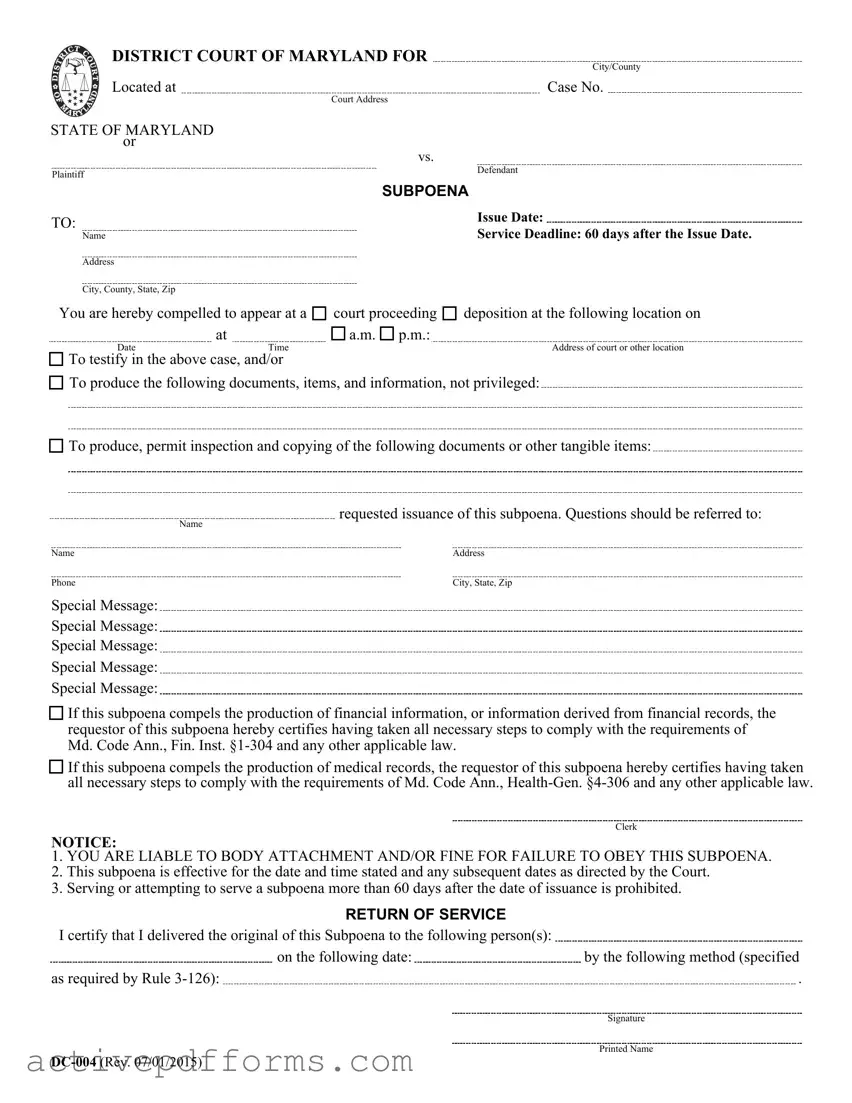When it comes to legal documents, the Maryland (Md) Subpoena form is no exception to widespread misconceptions that can cloud the understanding of individuals who are not well-versed in legal processes. Four common misconceptions about the Maryland Subpoena form include:
- Misconception 1: Anyone can issue a Maryland Subpoena.
- Misconception 2: A subpoena requires your presence only if it's handed to you in person.
- Misconception 3: There are no legal repercussions for ignoring a subpoena if you believe it to be irrelevant.
- Misconception 4: Subpoenas can be used to obtain any and all types of information without limitation.
Addressing Misconception 1, it's crucial to understand that not just anyone can issue a subpoena in Maryland. The process requires a formal request to the court or by the authority of a lawyer who is actively engaged in a legal proceeding. This ensures that the issuance is for a legitimate legal purpose and meets specific legal criteria.
Turning to Misconception 2, it's often believed that a subpoena must be delivered in person to be valid. While personal delivery is a common method, Maryland law also permits other methods of delivery, such as mail, as long as they comply with established procedures. Once a subpoena is issued and correctly delivered, the recipient is bound to comply, regardless of the delivery method.
Confronting Misconception 3, the belief that one can ignore a subpoena if it seems irrelevant is dangerous. The notice clearly states, "YOU ARE LIABLE TO BODY ATTACHMENT AND/OR FINE FOR FAILURE TO OBEY THIS SUBPOENA." This underscores the serious legal consequences for non-compliance, which can include fines or even an arrest. Ignoring a subpoena is never advisable; the proper course of action is to consult with a legal professional about any concerns regarding its relevance or scope.
Lastly, addressing Misconception 4, subpoenas are subject to legal limitations, especially when it comes to private or sensitive information. Specific laws, such as Md. Code Ann., Fin. Inst. §1-304 for financial information, and Md. Code Ann., Health-Gen. §4-306 for medical records, set forth protections and requirements for their release. These laws ensure that subpoenas do not overreach into obtaining information that is privileged or protected without proper authorization or procedural safeguards.
In conclusion, understanding the nuances and legal obligations surrounding the Maryland Subpoena form is vital for anyone who receives one. Clearing up misconceptions can help individuals respond appropriately and uphold their legal responsibilities.


 a.m.
a.m. 
 p.m.:
p.m.: